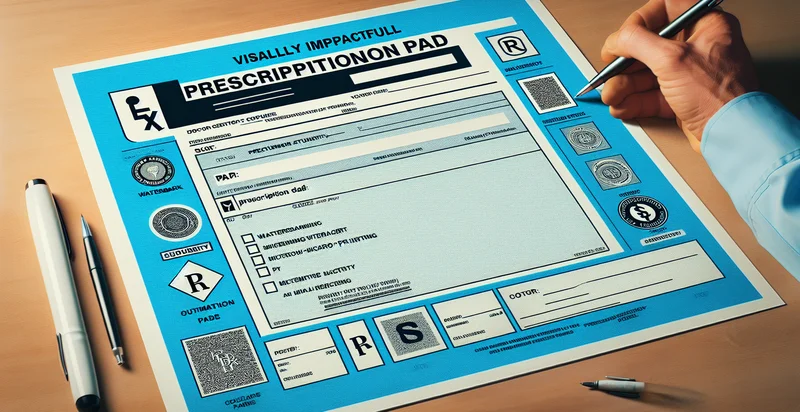Identify prescription visibility
using AI
Below is a free classifier to identify prescription visibility. Just upload your image, and our AI will predict the appropriate medication based on the patient's symptoms - in just seconds.

Contact us for API access
Or, use Nyckel to build highly-accurate custom classifiers in just minutes. No PhD required.
Get started
import nyckel
credentials = nyckel.Credentials("YOUR_CLIENT_ID", "YOUR_CLIENT_SECRET")
nyckel.invoke("prescription-visibility", "your_image_url", credentials)
fetch('https://www.nyckel.com/v1/functions/prescription-visibility/invoke', {
method: 'POST',
headers: {
'Authorization': 'Bearer ' + 'YOUR_BEARER_TOKEN',
'Content-Type': 'application/json',
},
body: JSON.stringify(
{"data": "your_image_url"}
)
})
.then(response => response.json())
.then(data => console.log(data));
curl -X POST \
-H "Content-Type: application/json" \
-H "Authorization: Bearer YOUR_BEARER_TOKEN" \
-d '{"data": "your_image_url"}' \
https://www.nyckel.com/v1/functions/prescription-visibility/invoke
How this classifier works
To start, upload your image. Our AI tool will then predict the appropriate medication based on the patient's symptoms.
This pretrained image model uses a Nyckel-created dataset and has 20 labels, including Acceptable, Blurred, Clear, Complete, Correct, Damaged, Deteriorated, Faded, Illegible and Incomplete.
We'll also show a confidence score (the higher the number, the more confident the AI model is around the appropriate medication based on the patient's symptoms).
Whether you're just curious or building prescription visibility detection into your application, we hope our classifier proves helpful.
Related Classifiers
Need to identify prescription visibility at scale?
Get API or Zapier access to this classifier for free. It's perfect for:
- Medication Verification: This function can be applied to enhance medication safety by validating captured prescription images against a database. It ensures that the prescriptions are genuine and not falsified, thereby reducing the risk of medication errors and fraud.
- Prescription Compliance Monitoring: Healthcare providers can use this identifier to track whether patients are adhering to their prescribed medication regimens. By analyzing prescription images, they can identify patterns of non-compliance and intervene when necessary to improve patient outcomes.
- Insurance Claim Processing: Insurance companies can implement this function to streamline the verification of prescription claims. By automating the identification of false prescriptions, they can expedite approvals and reduce fraudulent claims, leading to cost savings and improved service efficiency.
- Pharmacy Audit and Quality Control: Pharmacies can utilize the identifier to conduct regular audits of prescription images. This ensures that the prescriptions being filled comply with regulations and standards, thus maintaining accountability and minimizing the risk of dispensing errors.
- Research and Data Analysis: Pharmaceutical researchers can leverage the function to analyze prescription patterns over time. By assessing aggregated imaging data, they can identify trends in medication prescriptions, which can inform drug development and marketing strategies.
- Telehealth Services: The identifier can enhance telehealth consultations by validating prescriptions submitted by patients through digital platforms. It gives healthcare providers confidence in the authenticity of prescriptions received electronically, thereby facilitating safe remote patient care.
- Patient Education and Engagement: This function can be utilized to educate patients on recognizing valid prescriptions and understanding their medications. By providing insights on prescription visibility, it empowers patients to take an active role in their health management and medication adherence.


